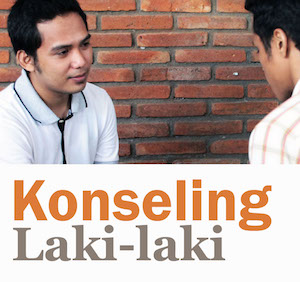The Minister of Social Affairs, the Minister of Health and the Minister of Women Empowerment and Child Protection, as aired on several television media, lead a discourse on the sterilization of perpetrators of sexual violence against children as a intervention model and punishment that should be selected in order to achieve a deterrent effect towards perpetrators. The choice of this intervention is certainly based on the perspective that views sexual violence as a biological-psychological problem so that the chosen intervention model targets the perpetrator‘s biological organs. This paper attempts to provide an alternative viewpoint for the society not to merely view the issue of violence against children as a biological-psychological problem.
Limitations of the psychopathologic perspective
So far, as we have seen in television, in many cases of sexual violence against children it is revealed that the psychopathologic perspective becomes popular in understanding the violent behavior of the perpetrator. In general this perspective uses the reference Diagnostic and Statistical Manual of Mental Disorder (DSM) which contains the classification of mental and behavioral disorders in diagnosing human behavior to be classified as “normal” or “deviant”. The psychopathologic perspective aims to look for the causality within the one person who gets the other person into the disability or mental and behavioral disorder so that sexual violence is committed.
However, the perspective that only uses the psychopathologic point of view in viewing cases of sexual violence will keep the problem from its social context, especially in viewing the relationship between the perpetrator and the victim. The psychopathologic perspective is not able to unload the relational politics between the perpetrator and the victim that are actually addressing the hierarchy of power, control and domination by age, gender, race, ethnicity and religion in a particular culture of the society[2], particularly in Indonesia.
In cases of sexual violence against children committed by adults it is assumed that the cause is a biological-psychological disruption of the perpetrator so that he is not able to control his biological urge and commits violence. Efforts that are undertaken are tracking and intervening the source of the problem that is the hormone testosterone which is considered the most responsible.
In fact there is no “psychological illness” that is settled as if it was in a vacuum without any contact with the social context. The experience of Rifka Annisa in Yogyakarta in assisting male perpetrators of violence against women and children indicates that the values and norms of the patriarchal masculinity have a great stake in making them obsessed with power and ways of solving masculine problems (violence) when facing problems of life.
For example in one case the perpetrator had a bad history within his family that made him become rude and impulsive. In various counseling sessions it is discovered that when the perpetrator is angry he is physically and verbally only rude to his wife and his children at home. Abusive behavior and a rude attitude do not appear when he faces his boss in the office, male friends, his male counselor or women working as police officers handling the case.
The perpetrator can only control his emotions when dealing with other individuals of the same sex or women of a higher social class. So what is the reason why it does not work to control the anger when facing the wife and the children at home? In this case the construction of gender takes on a very important role in how men interpret all kinds of emotions following the situation, how they are expressed and on whom they can be wreaked and on whom not.
In cases of rape and sexual harassment reported to Rifka Annisa Yogyakarta[3], the majority of victims are women with a low social status and a weak economy, girls, women at work, women with mental and physical limitations, women who are in need of help for the life of the strong and knowledgeable figures who are mostly men, both in setting the family, the school, the university, the workplace, the streets and the community.
Therefore, if the fulfillment of sexual desires can be selected from a variety of ways, why do many men chose children? The chosen victims tend to be children who are already known by the perpetrator who understands the pattern of unequal relations between him and the victim. Of course it is very naive if the explanation of cases of sexual violence against children is based on libido and hormonal problems alone.
The Sterilization Penalty
There are two types of sterilization that are currently known. First, by surgery (surgical sterilization) that intervenes or cuts off the testicular section of the perpetrator to dispel the growth of the testicular hormone testosterone which is considered as the sexual trigger. Second, by injection of chemicals (chemical sterilization) that is gradually injecting a chemical anti-androgenic liquid that is known as MPA ((medroxyprogesterone acetate) in the United States and as CPA (cyproterone acetate)[4]in the United Kingdom and Canada. The chemical injection also serves to control the development of a person’s testosterone.
The number of researches in the United States, the United Kingdom and Canada indicates that the injection of MPA and CPA can actually decrease the sexual drive of the perpetrator. However, it should be underlined that the chemical sterilization treatment is only effective for a perpetrator who is ready and willing to be injected[5]. They are perpetrators who voluntarily choose to follow the gradual chemical sterilization program because they feel that other psychological intervention forms do not suit them. Therefore, the chemical sterilization program is executed in these three countries as a part of a medical intervention option for the perpetrator and not primarily as a form of punishment.
Another medical report states that not every condition of the perpetrator’s body matches the type of the selected chemical drugs. Each perpetrator has its own characteristic body reaction which has different results when the body is injected with these chemical liquids[6]. In some cases it is successful and in some cases not. This entails concerns that perpetrators lie when claiming that injections work properly in the body. Meanwhile the society already believes in the early intervention model namely that the perpetrators who have been sterilized are completely cured and will not commit sexual violence again so that the society feels completely safe when the perpetrator returns to his social environment. This is very dangerous, of course.
In the United States many perpetrators of sexual violence who have been sterilized try to restore the function of their manhood by consuming certain drugs which are sold freely to counter the effect of these anti-androgenic injections[7]. In Indonesia the government has to be ready to provide consequences of the emergence of practices that are harmful to health which are undertaken by many sterilized perpetrators namely by consuming drugs or traditional herbs that are medically harmful in order to recover manhood. Furthermore, Indonesia is still dominated by a patriarchal culture, needless to say that we need to ask how male perpetrators perceive themselves as men after sterilization. How does the perspective on themselves after sterilization influence the way they behave and establish relationships with others? Do not let the perpetrators who have been sterilized feel unable to meet the standards of masculinity in society that are related to sexual functions so that they feel the need to commit other crimes to be more masculine.
The government should also be prepared with a regulatory or legal framework for medical practitioners associated with professional ethics. If the sterilization injection is performed by the doctor then it becomes a part of medical intervention in the form of professional ethics which has to be approved by the patient (informed consent) and the patient has to be informed about the side-effects of the post-injection. The government should also be prepared for the budgetary consequences while keeping in mind that the process of sterilization does not only consist of one injection but of several injections given gradually which does not cost little and is highly dependent on the cooperative behavior of the perpetrator.
Masculinity and Sexuality
For men the sexuality is a part of their male identity. Values and beliefs of the male sexual world are founded on the conquest, challenge and strength of evidence in which men feel forced to be able to “vanquish” their partner. For example, in everyday life the size of masculinity is reflected in the jargon of sexual conquests such as “Come on, how many rounds are you strong?!”, “win-lose”, “KO”, “weak”, “lackluster” which are all related to meanings of fight. This makes men try to win this “sexual battle” by any means including violence against vulnerable groups in the social hierarchy. The intervention program is merely a psychological and medical treatment and does certainly not fully address the root causes related to issues of power, control and domination. Sexual crimes are only reduced to the extent of psychological diseases and individual disorders of behavior.
In 2013 Rifka Annisa Women’s Crisis Centre which is supported by four UN agencies (UNICEF, UNFPA, UN WOMEN, UNV) conducted a quantitative research by taking three areas in Indonesia, Jakarta, Purworejo and Jayapura that involved 2,765 adult male respondents[8]. One purpose of this study was the mapping of men’s experience of life related to sexual violence both as perpetrators and past victims and the identification of the way how this matter relates with violence they have committed to women and children.
In Indonesia the result of this research provided the information that between 19.5% and 48.6% of the respondents that were observed in the three areas claimed that they have ever committed sexual violence against girls or adult women in their lives. These male respondents who have ever committed sexual violence against women and children were positively correlated with their attitudes of gender-inequality and norms of patriarchal masculinity which exalt machoism, control and domination over other people, especially women and children. One aspect of the norms of patriarchal masculinity that is very damaging is the belief that men’s sexual entitlement is always and constantly present, anytime, anywhere and from anyone, only because they are men.
A Critical Review on the Prevention Programs Existing Today
In general the programs of early prevention of sexual violence against children target children who are considered vulnerable to become a victim. This strategy is selected with the assumption that the majority of victims of sexual violence committed by adults are children wherefore they should be the main target of all prevention programs of sexual violence. In other words, as people who are considered to be potential perpetrators of sexual violence cannot be identified easily they are potentially vulnerable to become the victim and the main target of prevention programs.
Prevention programs that are currently popular are held by teaching children about three countermeasures namely introducing concepts and forms of sexual violence including the identification of the body parts which must not be touched by other people or anyone, teaching them to dare to act and reject if anyone else tries to touch these body parts, and encouraging children to dare to tell their parents when experiencing events that lead to sexual violence.
In the United States similar programs were developed and carried out by schools in every district since the late 1970s to the early 1980s[9]. It should be recognized that based on some evaluative researches this strategy succeeded in raising public awareness about the dangers of sexual violence against children. Fifteen to twenty years after the implementation of this prevention program events of sexual violence reported to the police by the society begin to proliferate although the number of cases which are not reported is far higher, especially the number of cases in which the perpetrator is related by blood with the victim. Based on all the reports and academic studies nearly 90% up to 95% of the perpetrators are men who are known by the victim, have an emotional relationship with the victim, and are regarded as a figure that serves the victim.
This situation also causes a preventive effort that makes children the main target of the program by providing them with ways to escape the threat of sexual violence which reaps criticism in the United States. In one research by Finkelhor and Dziuba-Leatherman in 1995[10] it is reported that after receiving information about sexual violence in these lessons many children are anxious, especially when being outside of the home or whenever together with other adults.
A critical question that is far more important is whether skills and information that are obtained on the prevention of sexual violence can be applied by the child in various conditions and real situations when violence takes place or when dealing directly with the perpetrator who is already known to be close to the child.
This is because the mode that is used by the perpetrator is very varied and evolves over time as developing emotional intimacy with the child such as persuasion and seduction, luring up to take advantage of her status as the idol figure of a potential victim. Moreover, the age difference between the victim and the perpetrator causes unequal relations in relation to the cognitive development of the child that is not yet mature enough which also causes difficulty for the child in resisting the enticements of the perpetrator. Even though some children are able to resist and be aware of the mode used by the perpetrator it often ends with the death of the victim.
This prevention program model in the United States teaches the children to dare not to speak with people trying to harass them in a sexual way which is only effective when the perpetrator is a person that is not known or not close in an emotional way. In fact most of the perpetrators of sexual violence against children are the ones who are known to be close to the victim, a good idol, very needed by the victim and wielding power on the victim.
The Transformation of Masculinity and Power Relations as a Prevention Model
It is seen from the evaluation of the prevention program of sexual violence in the United States that if the targets are children who are considered to be potential victims then it is necessary to redress the program by incorporating this as well as a prevention program which targets those who are considered to be potential perpetrators of violence.
Male perpetrators who have been legally prosecuted or not and men in general who have not committed violence have been raised in the same patriarchal culture. The culture that makes them adopt single values and norms of masculinity is oriented to control, domination and superiority of men over women and children in all aspects of life, especially in the realm of sexuality. They are sustained by the same value system. The majority of male perpetrators are never reported and men who do not commit sexual violence are those who tend to clam up and be permissive when they see other men committing practices of discrimination and sexism both against women, adolescents, children and fellow men who are considered as less masculine.
Prevention programs of sexual violence need to target men in general of all ages, children, adolescents, adults and fathers in accordance with their respective social roles. Prevention programs aim to transform the pattern of unequal relations between sex, age and social status by changing the values and norms of the patriarchal masculinity into values of equality and respect for others. While men have studied the way how to become a real men in a patriarchal culture for a long time it is now time to invite them to become human and readopt the values of humanity. They will learn how to build healthy relationships with anyone which are not based on power but equality.
This prevention program is conducted by inviting them to join reflective discussions, to discuss themes related to gender equality and masculinity, to become a man, husband and father and to share domestic roles as well as healthy relationships. Adolescent and adult men are invited to reflect the process of becoming a man by following the values and norms of masculinity they believe in.
They will be invited to discuss how masculinity affects the lives of other people and themselves, especially in terms of mental health. In all age ranges, specifically masculinity and sexuality are discussed. This issue invites men to dismantle myths about male virility that trigger risky sexual behavior of men including sexual violence, and to explore the implications for themselves. The issues raised in this reflective discussion can reduce men’s resistance when discussing issues of sexual violence. The issue and the method of the discussion are used to make serious efforts to allude the issue of violence by discussing issues of maleness and stories of their lives as men in which they also feel tough.
Prevention Programs of sexual violence have currently been running, especially in Yogyakarta co-operations and initiatives involve many parties such as the regents, the heads of the villages and hamlets, the society, social services, educational services, health services, the office of religious affairs (KUA), the schools, the youth and NGOs. The handling of sexual violence requires intersectoral co-operation and coordination and is not the duty and function of the ministries only.The central government, through the ministry of PMK, has to take on a leading and coordinating role to embrace all the ministries under it so that they do not walk alone without a clear direction if the situation is actually serious.
Written by: Aditya Putra Kurniawan, Researcher at Rifka Annisa Women’s Crisis Centre, Yogyakarta, email This email address is being protected from spambots. You need JavaScript enabled to view it.
Translated by: Lisa Hallmann
Keenan, M. (1998). Narrative therapy with men who have sexually abused children, The Irish Journal of Psychology, 19, I, 136-151
Data kasus Divisi Pendampingan Rifka Annisa, 2014
Flora, R. (2014). How to Work with Sex Offenders: A Handbook for Criminal Justice, Human Service and Mental Health Professionals. Routledge: London
Grossman, L.S., Martis, B & Fichtetner, C.G. (1999). Are Sex Offenders Treatable? A Research Overview. Psychiatric Services (3)50, 349–361.
Fred Berlin, founder of the sexual disorders clinic at Johns Hopkins University on ABC News. Some Sex Offenders Opt for Castration http://abcnews.go.com/US/story?id=93947&page=1
An Ethical Analysis of the Use of Medroyprogesterone Acetate and Cyproterone Acetate to treat Repeat Sex Offenders. Elizabeth Pitula, 2010. http://academiccommons.columbia.edu/catalog/ac%3A132381
Fulu, E., Warner, X., Miedema, S., Jewkes, R., Roselli, T. and Lang, J. (2013). Why Do Some Men Use Violence Against Women and How Can We Prevent It? Quantitative Findings from the United Nations Multi-country Study on Men and Violence in Asia and the Pacific. Bangkok: UNDP, UNFPA, UN Women and UNV
http://www.partners4prevention.org/sites/default/files/resources/p4p-report.pdf
Bolen, R.M. (2003). Child Sexual Abuse: Prevention or Promotion. Social Workers, Vol.48 (2), 174 – 185.
Finkelhor, D & Dziuba-Leatherman, J. (1995). Victimization Prevention Program. A National Survey of Children’s exposures and reactions. Child abuse & neglect. 19, 129 - 139







